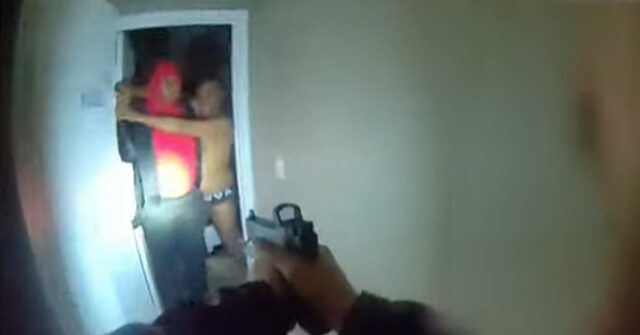On Tuesday, a significant incident unfolded in Las Vegas, leading to a tragic outcome involving local law enforcement responding to a 911 call. Brandon Durham, a 43-year-old father living with his 15-year-old daughter, alerted authorities at approximately 12:40 a.m., reporting that two individuals had broken into their home. The situation escalated quickly upon the arrival of the Las Vegas Metropolitan Police Department. When officers reached the scene, they noted signs of disturbance, including smashed windows on both the vehicles in the driveway and the residence itself. The gravity of the situation was palpable, with initial reports indicating that the call for help might turn into a complicated and potentially dangerous confrontation.
Upon entering the home, officers discovered a chaotic scene where Durham was engaged in a physical struggle with 31-year-old Alejandra Boudreaux over a knife. This confrontation was critical; it intensified the urgency of the officers’ response. Law enforcement attempted to de-escalate the situation with verbal commands, repeatedly instructing both individuals to drop the weapon. The lack of compliance led to a tragic and fatal decision by one of the responding officers, who opened fire, resulting in Durham’s death due to multiple gunshot wounds. This event raises important questions about police response protocols in high-stress domestic situations and the potential consequences of split-second decisions made by officers in the field.
Witness reports and subsequent police investigations suggest that there was a pre-existing relationship between Durham and Boudreaux, which adds layers to the complexity of the incident. Boudreaux has since been charged with several offenses, including home invasion with a deadly weapon, assault with a deadly weapon, and domestic violence. These charges indicate that the incident may have been more than just a random break-in; it could involve elements of domestic dispute or personal conflict that escalated dangerously. Understanding this relationship is crucial for piecing together not just what happened during this specific incident but also the broader context of domestic violence and its impacts on families and communities.
The Las Vegas Metropolitan Police Department held a press conference following the events to provide clarity and information about the incident, which drew significant media attention. The nature of the responses from the police, in terms of accountability and transparency, is crucial in maintaining public trust, especially following instances of police-involved shootings. The department’s willingness to engage with the media and the community demonstrates an acknowledgment of the seriousness of the events as well as an effort to maintain open channels for dialogue regarding law enforcement actions and community safety.
Incidents like this highlight the ongoing national conversation regarding police practices and the complexities of responding to emergency situations. As communities grapple with the realities of violence, both from perpetrators and in the very acts of policing, there is a pressing need for comprehensive training and clear policies that guide officers during domestic disputes and other high-stakes scenarios. Additionally, these discussions often touch on issues of mental health, access to conflict resolution resources, and the need for effective communication strategies between law enforcement and the communities they serve.
In conclusion, the tragic death of Brandon Durham serves as a stark reminder of the complexities surrounding police interactions in emergencies, particularly involving domestic disputes. As investigations continue and Boudreaux faces serious legal charges, it is essential for community leaders and law enforcement agencies to reflect on these incidents to foster understanding, improve safety protocols, and ultimately aim for a system that prioritizes the well-being of all individuals involved in such volatile circumstances. This incident is not just a singular event but part of a broader narrative that continues to evolve, highlighting the urgent need for reform and better practices within law enforcement.

